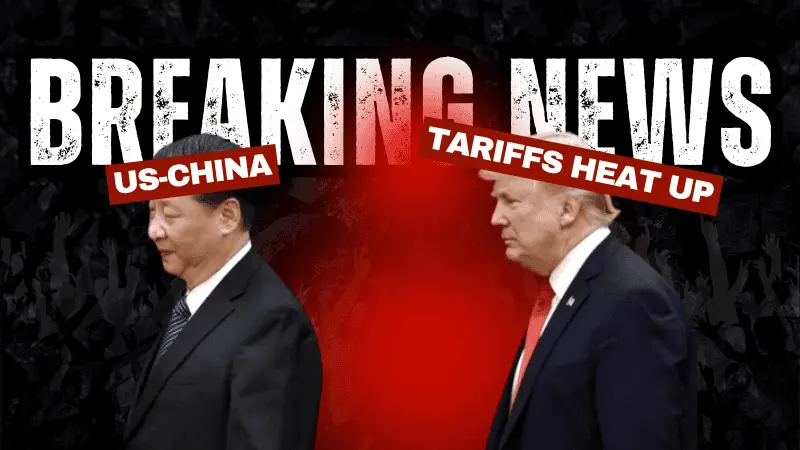简体中文
繁體中文
English
Pусский
日本語
ภาษาไทย
Tiếng Việt
Bahasa Indonesia
Español
हिन्दी
Filippiiniläinen
Français
Deutsch
Português
Türkçe
한국어
العربية
Effect of Tariffs on Gold and Oil Prices
Abstract:Tariffs—taxes imposed on imported goods—serve as tools for governments to protect domestic industries, generate revenue, and influence trade balances. However, their impact on commodity markets, particularly gold and oil, is multifaceted and can lead to significant price fluctuations.

Tariffs—taxes imposed on imported goods—serve as tools for governments to protect domestic industries, generate revenue, and influence trade balances. However, their impact on commodity markets, particularly gold and oil, is multifaceted and can lead to significant price fluctuations.
Impact on Gold Prices
Gold is traditionally viewed as a safe-haven asset, attracting investors during periods of economic uncertainty and geopolitical tensions. Recent tariff implementations have underscored this role. For instance, in February 2025, U.S. President Donald Trump announced substantial tariffs on imports from China, Mexico, and Canada, including a 25% tariff on automobiles and a 10% tariff on Chinese goods. These measures heightened concerns about a potential trade war, prompting investors to seek the stability of gold. Consequently, gold prices surged, reaching record highs above $2,900 per ounce.
The relationship between tariffs and gold prices is complex. While tariffs can drive gold prices up due to increased demand for safe-haven assets, they can also lead to economic slowdowns that reduce industrial demand for gold, potentially exerting downward pressure on prices. Additionally, the strengthening of the U.S. dollar, often a response to tariff-induced economic shifts, can make gold more expensive for holders of other currencies, influencing its global demand and price.
Impact on Oil Prices
The effect of tariffs on oil prices is influenced by several factors, including trade dynamics, supply chain disruptions, and shifts in global demand. In February 2025, the U.S. imposed tariffs on Canadian and Mexican goods, including oil. This move raised concerns about the stability of oil supply chains, especially since the U.S. relies heavily on Canadian crude oil imports. Analysts warned that such tariffs could strain this relationship, potentially increasing U.S. energy costs and contributing to inflation.
However, the direct impact of these tariffs on oil prices may be limited in the short term. Goldman Sachs analysts noted that while the tariffs could widen the discount on Canadian crude, the effect on U.S. gasoline prices would be modest. They estimated a $3 to $4 per barrel wider discount on Canadian crude, with U.S. consumers bearing an additional $2 to $3 per barrel burden.
It's important to recognize that oil prices are also influenced by other factors, such as geopolitical events, OPEC+ production decisions, and global economic conditions. For example, tensions in the Middle East and potential supply disruptions can lead to oil price volatility, independent of tariff policies.
Conclusion
Tariffs can significantly influence the prices of gold and oil, but their effects are complex and multifaceted. While tariffs may drive up gold prices due to increased demand for safe-haven assets, they can also lead to economic slowdowns that reduce industrial demand for gold. Similarly, while tariffs can disrupt oil supply chains and potentially increase energy costs, their direct impact on oil prices may be limited in the short term. Therefore, investors and policymakers must consider a range of factors, including economic indicators, geopolitical events, and market dynamics, when assessing the potential effects of tariffs on commodity prices.

Disclaimer:
The views in this article only represent the author's personal views, and do not constitute investment advice on this platform. This platform does not guarantee the accuracy, completeness and timeliness of the information in the article, and will not be liable for any loss caused by the use of or reliance on the information in the article.
Read more

US-China Tariffs Heat Up—Pause Still Possible, Says Bessent
President Trump signaled the U.S. and China are effectively in a trade war, even as Treasury Secretary Scott Bessent left room to extend a current tariff pause and a Trump–Xi meeting remains on the calendar. After floating a new 100% tariff on Chinese goods from Nov. 1, tensions seesawed amid Chinese sanctions and U.S. threats over soybeans. Some U.S. tariffs (up to ~145%) are paused until Nov. 10, with a Supreme Court test of “reciprocal” tariffs looming. Companies are adapting unevenly—Stellantis expanding in the U.S., while Apple deepens ties in China—suggesting continued market volatility.

Gold in Forex Explained: Importance, Smart Trading Tips & Price Triggers
Gold is represented by the XAU/USD pair in the global forex market, reflecting the value of one ounce of gold against the US dollar. Here, XAU represents gold, while USD is obviously the US dollar. Gold acts as a commodity, and the dollar remains the primary currency in this pair. Forex traders use this pair to trade and invest in gold price fluctuations.

Gold Price Breaks Through the $3,500 Barrier
Gold prices climbed sharply this week, breaking above the $3,500 per ounce level for the first time, as investors sought safety amid ongoing economic uncertainty and shifting monetary policy expectations.

Short or Long Term: Which to Choose for Double-Digit Returns from Gold Investments?
Everyone is asking - whether I should invest in gold for the short or long term given the recent surge? Explore this guide to know how gold has performed over the years, its outlook, and more details.
WikiFX Broker
Latest News
Stonefort Broker Review 2025: Legit or Risky? A Complete Analysis
Quantower Review 2025: User Reviews and Complaints in India
Uniglobe Markets Review 2025: A Safe Broker or a High-Risk Scam?
CHINA BEST Broker Review: Regulation and Risks
TD Markets Exposed: Price Manipulation, Withdrawal Issues & False Promises Hurt Traders
Bank of England holds rates steady in narrow vote ahead of Autumn Budget
BingX Review: Traders Angry Over Withdrawal Denials, Account Blocks & More
Op-ed: The fuel for the AI boom driving the markets is advertising. It is also an existential risk.
PINAKINE Broker India Review 2025: A Complete Guide to Safety and Services
The United States Outgrows All Its Major Peers
Currency Calculator



